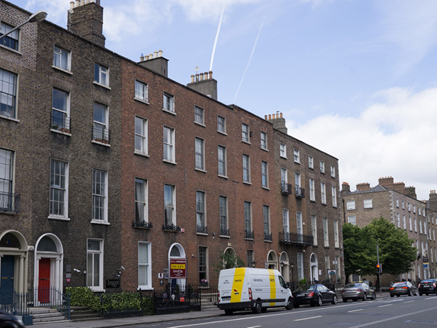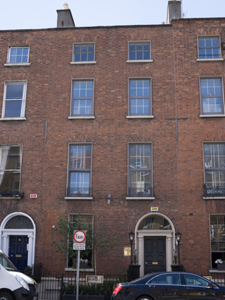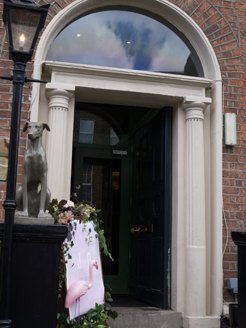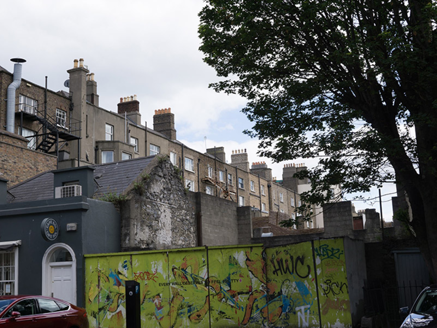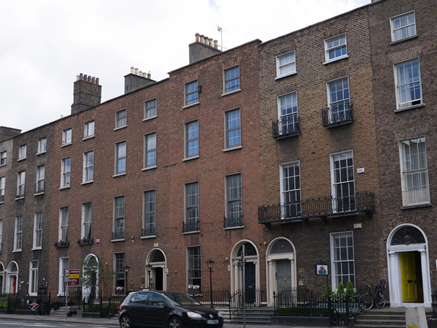Survey Data
Reg No
50110508
Rating
Regional
Categories of Special Interest
Architectural, Artistic
Original Use
House
In Use As
Hotel
Date
1800 - 1820
Coordinates
316286, 232921
Date Recorded
25/06/2017
Date Updated
--/--/--
Description
Terraced two-bay four-storey former house over basement, built c. 1810, having shallow two-storey projection to rear (west) elevation. Now in use as hotel and restaurant. M-profile hipped slate roof concealed behind red brick parapet with granite coping. Rendered chimneystacks having clay pots. Red brick, laid in Flemish Bond, to walls to front (east) elevation, with cut granite plinth course and rendered walls to basement and rear. Square-headed window openings having granite sills and raised rendered reveals, with mixed replacement six-over-six pane timber sliding sash windows. Decorative wrought-iron balconettes to first floor windows. Square-headed window and door opening to basement having recent fittings. Round-headed door opening with moulded render reveal, doorcase comprising fluted Doric columns and entablature. Plain fanlight and replacement door. Granite steps having cast-iron boot-scrape, to platform. Wrought-iron railings set on carved granite plinth wall to front.
Appraisal
No. 27 Leeson Street Lower typifies Georgian domestic architecture in this part of Dublin. The retention of salient features such as the balconettes and the sash windows add historical interest, while the well-made doorcase lends artistic interest to the composition. Lower Leeson Street was an important routeway in Georgian Dublin, serving as the road to Donnybrook from St. Stephens Green, and the street contains several townhouses built for Lord Dunboyne, the Duke of Ormonde. The buildings lining the street are united by a shared sense of proportion, creating a cohesively read streetscape.
